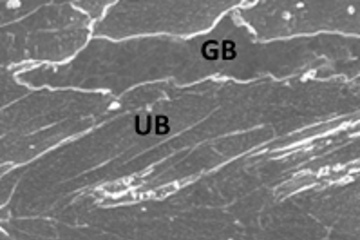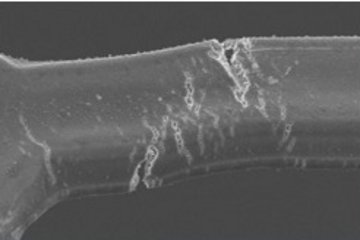All genres
141.
Talk
A Virtual Laboratory to Derive Mechanical Properties of Complex Microstructures. GLADD-Meeting, Aachen, Germany (2012)
142.
Talk
The general crystal plasticity framework DAMASK. Seminar Talk at ICAMS, Bochum, Germany (2012)
143.
Talk
A modular crystal plasticity framework applicable from single grain to component scale. TMS Annual Meeting, San Diego, CA, USA (2012)
144.
Talk
Influence of hard-phase skeleton on creep strength of Mg-alloys - Insights from full field deformation simulations. 9th Int. Conf. Magnesium Alloys and their Applications, Vancouver, Canada (2012)
145.
Talk
A nonlocal crystal plasticity model used to solve heterogeneous boundary value problems for 3D microstructures. 18th International Symposium on Plasticity & Its Current Applications, San Juan, Puerto Rico (2012)
146.
Talk
Dislocation-hexagonal dislocation network interaction in BCC metals. 18th International Symposium on Plasticity & Its Current Applications, San Juan, Puerto Rico (2012)
147.
Talk
DAMASK: The Düsseldorf Advanced Material Simulation Kit for studying crystal plasticity using FEM and FFT based numerical solvers. 18th International Symposium on Plasticity & Its Current Applications, San Juan, Puerto Rico (2012)
148.
Talk
Residual stress prediction by considering dislocation density advection in 3D applied to single-crystal bending. Euromat 2011, Montpellier, France (2011)
149.
Talk
A modular crystal plasticity framework applicable from single grain to component scale. XI Int. Conf. Computational Plasticity, Barcelona, Spain (2011)
150.
Talk
Dislocation flux in three-dimensional crystal plasticity. 9th International Conference of Numerical Analysis and Applied Mathematics, Halkidiki, Greece (2011)
151.
Talk
Residual stress prediction by considering dislocation density advection in 3D applied to single-crystal bending. 2nd International Conference on Material Modelling ICMM 2, Paris, France (2011)
152.
Talk
Solving finite-deformation crystal elasto-viscoplasticity with a fast Fourier transformation-based spectral method. 2nd International Conference on Material Modelling ICMM 2, Paris, France (2011)
153.
Talk
Creep-resistant Mg-alloys - benefits of an intermetallic phase skeleton. Werkstofftechnik-Seminar at Univ. Kassel, Kassel, Germany (2011)
154.
Talk
A modular crystal plasticity framework applicable from component to single grain scale. THERMEC 2011, Québec City, QC, Canada (2011)
155.
Talk
A dislocation density-based constitutive model for TWIP steels. 1st International Conference on High Manganese Steels, Seoul, South Korea (2011)
156.
Talk
Computational Crystal Plasticity. Korea Institute of Science and Technology (KIST), Seoul, South Korea (2011)
157.
Talk
Eine modulare Kristallplastizitäts Implementierung für Anwendungen vom Einkristall bis zum Bauteil. 14. Workshop Simulation in der Umformtechnik, Dortmund, Germany (2011)
158.
Talk
Combining characterization and simulation of grain-scale plasticity in three dimensions. EBSD Conference 2011 of the Royal Microscopical Society, Düsseldorf, Germany (2011)
159.
Talk
A modular crystal plasticity framework applicable from component to single grain scale. IUTAM Symposium Linking Scales in Computations: From Microstructure to Macro-scale Properties, Pensacola, FL, USA (2011)
160.
Talk
How to capture mesoscale plastic strain gradient effects in a physical way -- a look at dislocation mechanics and computational aspects. MST Symposium, Los Alamos National Laboratory, Los Alamos, NM, USA (2011)











